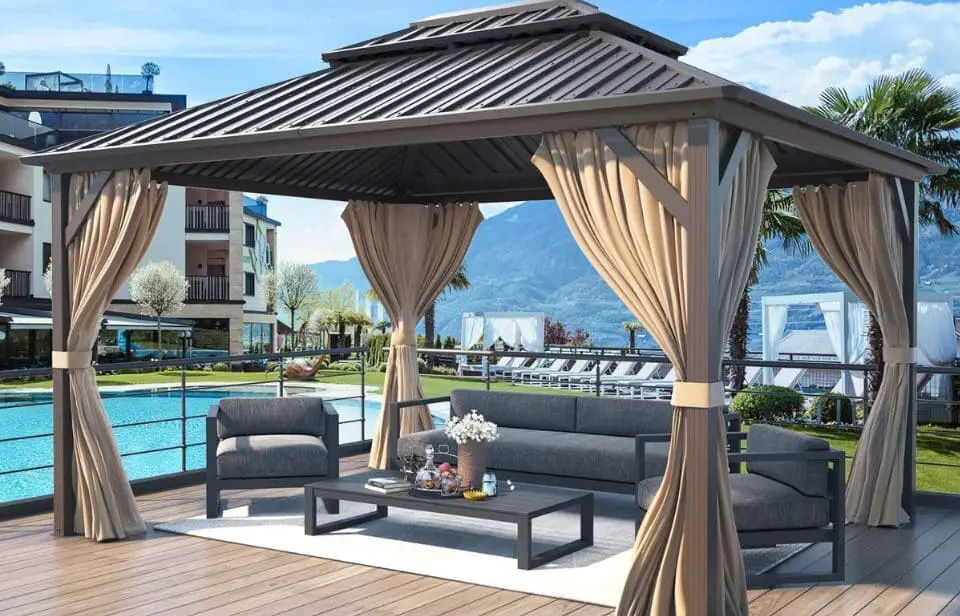I can confidently say that hard-top gazebos are constructed using various materials. Wood is a common choice due to its classic and timeless look, natural beauty, warmth, and durability.
However, wood requires regular sealing, staining, or painting to protect against weathering and can be susceptible to rot, insects, and warping over time.
Metal, such as aluminum, steel, or wrought iron, is another popular option known for its durability and stability, making it ideal for a modern aesthetic.
When choosing a material for a hard top gazebo, factors such as budget, climate, style, durability, and maintenance should be carefully considered to find the best fit for individual needs and preferences. Thorough research is always recommended for informed decision-making.
This article will discuss What Material is used to Construct a Hard top Gazebo?
What Material is used to Construct a Hard Top Gazebo? I commonly use wood, metal (aluminum, steel, or wrought iron), and synthetic materials like vinyl/PVC or polycarbonate to construct hard top gazebos, depending on client preferences and budget.
What is a Hardtop Gazebo?
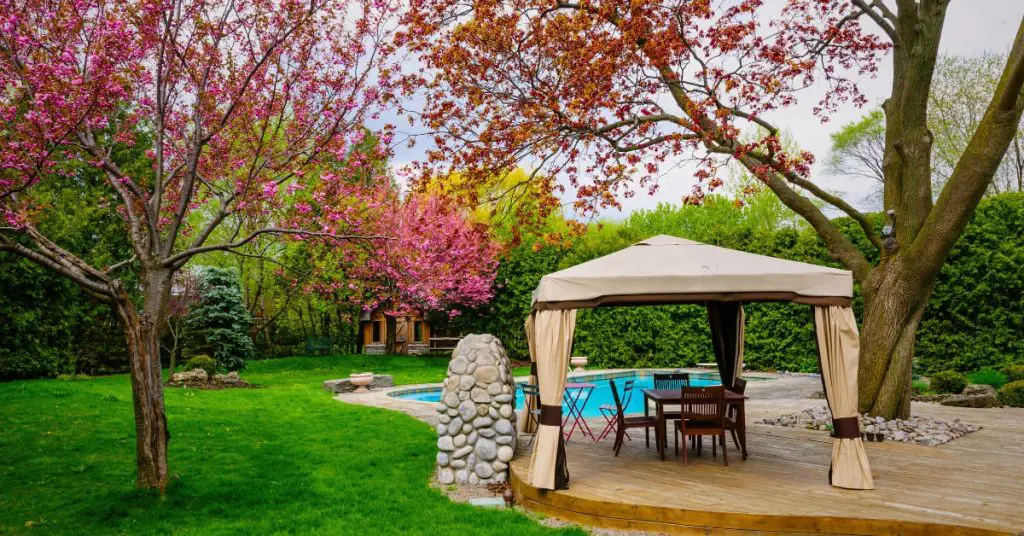
A hardtop gazebo is a type of outdoor structure that features a solid roof made of durable materials, such as wood, metal, or synthetic materials like polycarbonate or vinyl/PVC.
Unlike traditional soft-top gazebos with fabric or canopy roofs, hardtop gazebos have a solid roof that provides more permanent and sturdy protection against the elements, making them suitable for year-round use.
Hardtop gazebos are typically freestanding structures with open sides, often used for outdoor entertaining, dining, relaxation, or as a focal point in a garden or backyard space.
They come in various styles, shapes, and sizes and are designed to provide shade, shelter, and functional outdoor space for enjoying outdoor activities in comfort and style.
Wood
Here we discuss wood material, including wood types, and the pros and cons of using wood.
Types of Wood Commonly Used for Hardtop Gazebos
There are several types of wood, which are as follows:
A. Cedar:
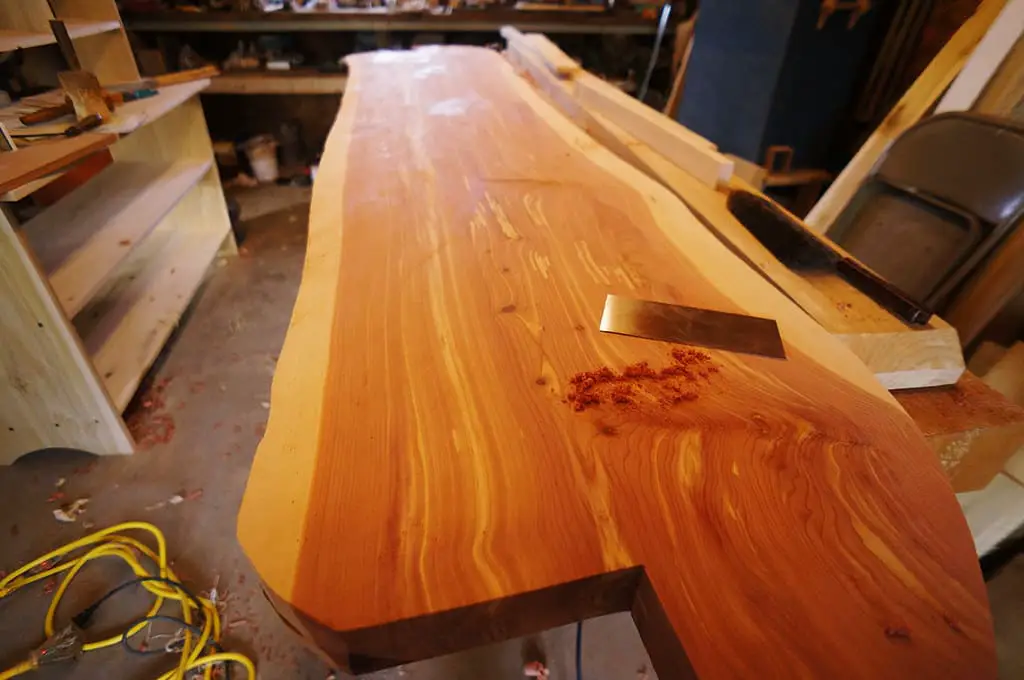
Cedar is a popular choice for hardtop gazebos due to its natural beauty, durability, and resistance to decay and insects. It has a rich color and aromatic scent, adding warmth and charm to any outdoor space.
Cedar wood is also known for its dimensional stability, meaning it is less likely to warp or crack over time, making it ideal for long-term use in outdoor structures.
B. Redwood:
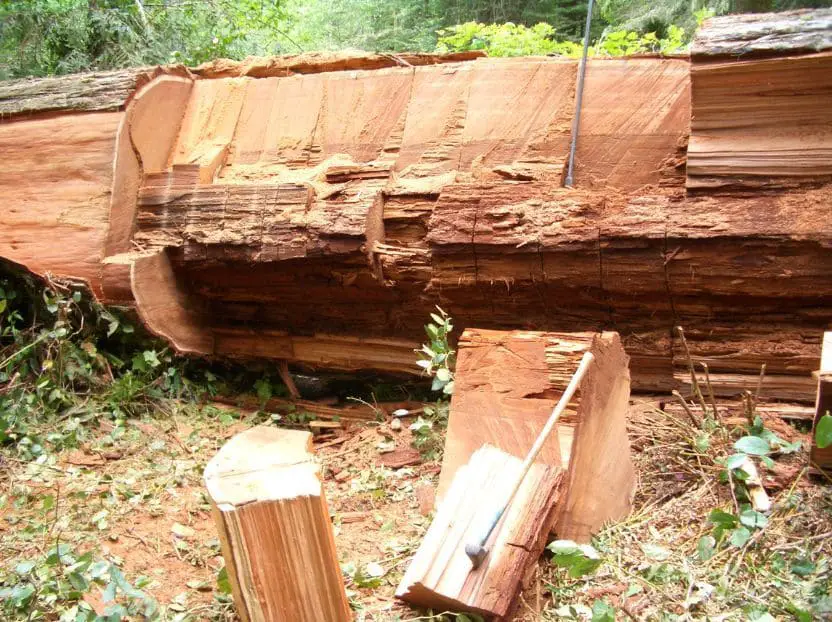
Redwood is another type of wood commonly used for hardtop gazebos due to its durability and natural resistance to decay, insects, and rot. It has a distinct reddish-brown color that can add a rustic and elegant look to any gazebo.
Redwood is also known for its stability and longevity, making it a reliable choice for hardtop gazebos that need to withstand harsh weather conditions.
C. Pine:
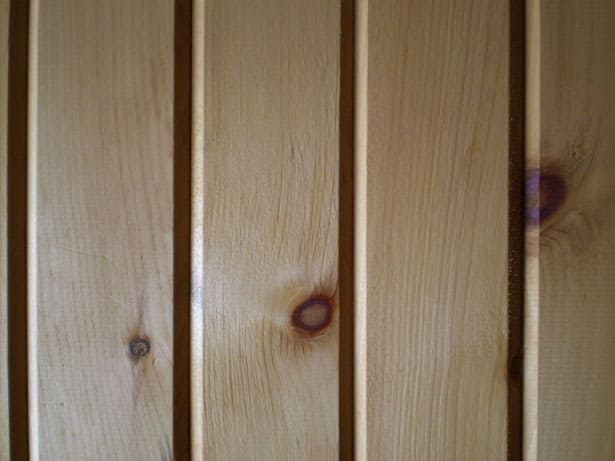
Pine is a more affordable option for hardtop gazebos and is often treated with pressure-treated chemicals to enhance its durability and resistance to decay and insects.
Pine wood is light and can be stained or painted to achieve the desired look.
It is a softer wood than cedar and redwood, so it may require more maintenance and care to prevent warping or cracking.
Pros and Cons of Using Wood
Here, we are discussing the pros and cons of using wood:
Pros of Using Wood for Hardtop Gazebos:
- Natural Beauty: Wood offers a warm, natural, and timeless look that can enhance the aesthetic appeal of a hardtop gazebo, adding charm and character to any outdoor space.
- Durability: High-quality wood, such as cedar or redwood, is naturally durable and can withstand elements, including harsh weather conditions, insects, and rot, making it suitable for long-term use in outdoor structures.
- Stability: Wood, when properly treated and maintained, can be dimensionally stable, meaning it is less likely to warp, twist, or crack over time, providing a sturdy and reliable structure for a hardtop gazebo.
- Customization: Wood can be easily cut, shaped, and stained or painted to achieve the desired look, allowing for customization and personalization to match the style and theme of the outdoor space.
Cons of Using Wood for Hardtop Gazebos:
- Maintenance Requirements: Wood requires regular maintenance to protect it from weathering, moisture, and UV rays. This may involve periodic staining, sealing, or painting, which adds to the overall maintenance efforts and costs.
- Vulnerability to Rot, Decay, and Insect Infestation: Wood is a natural material that can be susceptible to rot, decay, and insect infestation if not properly maintained. Moisture, dampness, and insects can cause wood to degrade over time, potentially compromising its durability and stability.
- Cost: High-quality wood can be more expensive than other hardtop gazebo materials, making it a less cost-effective option for those on a tight budget.
- Environmental Impact: The use of wood for hardtop gazebos may raise concerns about deforestation, sustainability, and environmental impact, as wood is a natural resource that may require cutting down trees.
Wood offers natural beauty, durability, stability, and customization options for hardtop gazebos. However, it also requires regular maintenance, can be vulnerable to rot and insects, may be costly, and may have environmental considerations.
Weighing these pros and cons is essential when deciding whether the wood suits a hardtop gazebo based on individual needs, budget, and environmental concerns.
Metal
Here we discuss metal material, including metal types, and the pros and cons of using metal.
Types of Metal Commonly Used for Hardtop Gazebos
There are several types of metal; here we will discuss:
Aluminum:
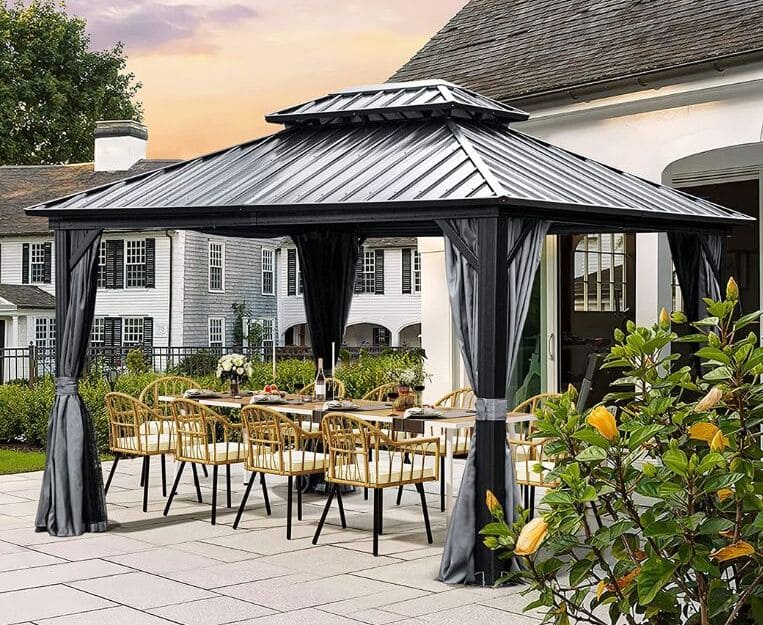
Aluminum is a popular choice for hardtop gazebos due to its lightweight, durable, and corrosion-resistant properties.
It is known for its sleek and modern appearance, making it suitable for contemporary outdoor spaces.
Aluminum is also low-maintenance, as it does not rust or require painting, making it a convenient option for those seeking minimal upkeep.
Steel:
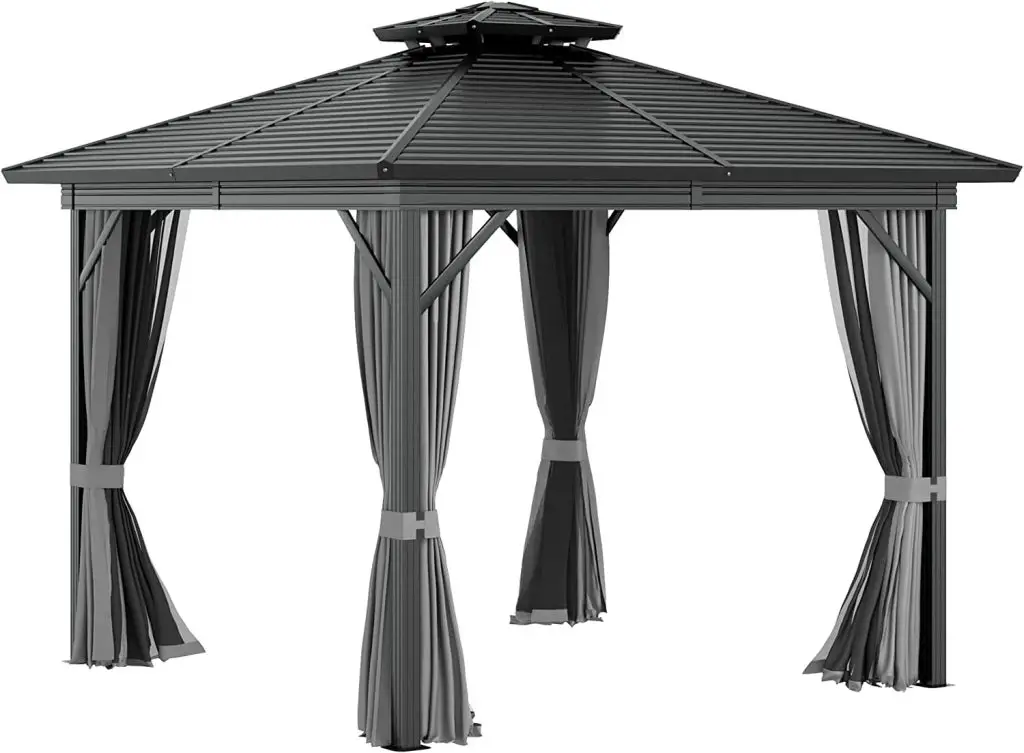
Steel is another common metal used in the construction of hardtop gazebos. Steel offers strength, stability, and durability, making it suitable for heavy-duty use and larger gazebos.
It is resistant to weather damage and can withstand harsh weather conditions. However, steel gazebos may require regular maintenance, such as painting or rust treatment, to prevent corrosion and maintain their appearance.
Both aluminum and steel are popular choices for hardtop gazebos due to their durability, stability, and modern aesthetics.
However, they may have different maintenance requirements and associated costs, and individual preferences, budgets, and intended use should be considered when choosing between aluminum and steel for a hardtop gazebo.
Pros and Cons of Using Metal
Here, we are discussing the pros and cons of using metal:
Pros of Using Metal for Hardtop Gazebos:
- Lightweight and Durable: Metal, such as aluminum and steel, is known for its lightweight yet durable properties, making it easy to install and transport. Metal gazebos are also resistant to rot, decay, and insect infestation, making them a long-lasting option for outdoor structures.
- Low Maintenance: Metal gazebos generally require minimal maintenance, as they do not require staining or sealing like wood. They resist weather damage and do not require regular painting or staining to maintain their appearance, saving time and effort in upkeep.
- Modern and Sleek Aesthetic: Metal gazebos offer a modern and sleek aesthetic that can complement contemporary outdoor spaces, providing a stylish and visually appealing addition to any outdoor setting.
Cons of Using Metal for Hardtop Gazebos:
- Heat Retention: One potential drawback of metal gazebos is that they can get hot when exposed to direct sunlight for extended periods, making them uncomfortable to use during hot summer days without proper shading or ventilation.
- Rust and Corrosion: Metal gazebos, particularly steel ones, can be susceptible to rust and corrosion over time, especially in areas with high humidity or near saltwater. Regular rust-proofing and maintenance may be required to ensure their longevity.
- Potential for Sharp Edges: Metal gazebos may have sharp edges or corners, which can pose a safety hazard, especially for children or pets.
Care should be taken during installation, and regular inspections should be conducted to ensure no sharp edges could cause injury.
- May Require Additional Coating or Painting: Metal gazebos may require additional coating or painting to protect against rust, corrosion, and weathering, which may add to the initial cost and maintenance requirements of the structure.
- Limited Customization: Unlike wood, metal gazebos may have limited customization options, as they cannot be easily shaped, cut, or stained to achieve a specific look or style.
Metal gazebos typically come in predetermined designs and finishes, which may not suit everyone’s preferences or match the existing outdoor decor.
Polycarbonate
Polycarbonate is a type of plastic material that is known for its strength, durability, and transparency. It is commonly used in the construction of hardtop gazebos due to its ability to withstand the elements, resist UV rays, and provide sound insulation.
Pros of Using Polycarbonate for Hardtop Gazebos:
- Lightweight and Durable: Polycarbonate is a lightweight material that is also highly durable, making it suitable for outdoor structures such as hardtop gazebos. It can withstand harsh weather conditions and resist impact, making it a long-lasting option.
- UV Resistant: Polycarbonate is UV resistant, which means it can protect against the harmful effects of prolonged sun exposure, such as fading or yellowing. This makes it an ideal choice for outdoor structures exposed to direct sunlight.
- Provides Good Insulation: Polycarbonate has good insulation properties, which means it can help regulate the temperature inside the pavilion, keeping it cooler in hot weather and warmer in cold weather.
Cons of Using Polycarbonate for Hardtop Gazebos:
- May Require Special Cleaning Methods: Polycarbonate can be susceptible to scratches and may require special cleaning methods to avoid damaging the material. Abrasive or harsh cleaning agents should be avoided to prevent scratching or clouding of the polycarbonate panels.
- Can Be More Expensive Than Other Materials: Polycarbonate can be more expensive than other materials used in hardtop gazebos, such as wood or metal. However, polycarbonate’s durability, UV resistance, and insulation properties may justify the higher cost for some buyers.
Polycarbonate is a durable and versatile material that offers several advantages for constructing hardtop gazebos.
However, it may require unique cleaning methods and can be more expensive than other materials, which should be considered when deciding on the material for a hardtop gazebo.
Fabric
Fabric is a flexible material made of woven fibers, including natural (cotton, linen, silk, wool) and synthetic (polyester, nylon, acrylic). It is used in various applications, including gazebos, for canopy covers that provide shade, ventilation, and aesthetics.
Types of Fabric Commonly used for Hardtop Gazebos
Here are several types of fabric, below:
Polyester:
Lightweight and affordable fabric resistant to mildew, fading, and UV rays makes it suitable for outdoor use.
Sunbrella:
It is a high-quality fabric known for its durability, fade, and water resistance, making it ideal for outdoor applications, including gazebos.
Pros and Cons of Using Fabric
Here are some pros and cons of using fabric:
Pros of Using Fabric for Hardtop Gazebos:
- Lightweight and Portable: Fabric is generally lighter than other materials, making it easier to transport and assemble. This can be beneficial when setting up or moving a hard top gazebo.
- Provides Good Shade and Ventilation: Fabric can provide adequate shade from the sun while allowing air to circulate, creating a comfortable and well-ventilated space underneath the gazebo.
- Affordable: Fabric is often more cost-effective than other materials like wood or metal, making it a budget-friendly option for a hard top gazebo.
Cons of Using Fabric for Hardtop Gazebos:
- Requires Regular Cleaning and Maintenance: Fabric can accumulate dirt, debris, and stains over time, requiring regular cleaning and maintenance to keep it in good condition and extend its lifespan.
- Less Durable: Fabric is generally not as durable as other materials like wood or metal, and may be more susceptible to wear and tear, fading, and weather damage over time.
- May Need Replacement: Depending on the quality and type of fabric used, it may need to be replaced more frequently compared to other materials, adding to the long-term cost of ownership.
VINYL
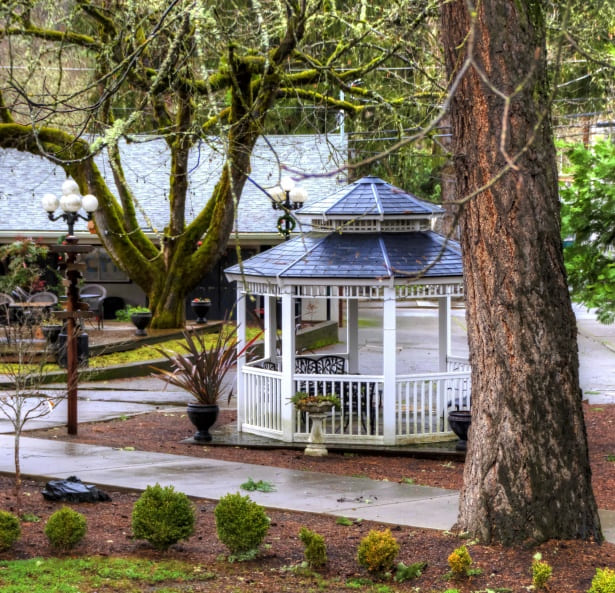
Vinyl is a lightweight and cost-effective material that can be used for DIY gazebo projects. It is heat-resistant, low-maintenance, and can be made to resemble wood, stone, or brick for aesthetic appeal.
Vinyl is easy to clean and withstand heavy use without chalking or cracking. It is also suitable for adding extra features like electricity for fans or lights.
If you’re looking for a low-upkeep and budget-friendly option, vinyl is an excellent choice for a long-lasting gazebo.
Pros and Cons of using Vinyl:
Here are some pros and cons of using vinyl:
Pros of using Vinyl for a Hardtop Gazebo:
- Durability: Vinyl is known for its long-lasting nature and ability to resist rot, decay, and insect infestation, making it ideal for outdoor structures like gazebos.
- Low maintenance: Vinyl requires minimal maintenance, such as occasional cleaning with soap and water, and does not require staining or painting like wood.
- Moisture resistance: Vinyl is highly resistant to moisture, making it ideal for areas with high humidity or frequent rain.
- Aesthetic appeal: Vinyl gazebos are available in various colors, finishes, and textures, allowing customization to match different styles and design preferences.
- Cost-effective: Vinyl is often more affordable than other materials like wood or metal, making it a budget-friendly option for a hard top gazebo.
Cons of using Vinyl for a Hardtop Gazebo:
- Heat sensitivity: Vinyl can expand and contract with temperature changes, which may cause warping or distortion over time, especially in extreme heat.
- Limited design options: While vinyl gazebos offer versatility in colors and finishes, they may have limited design options compared to other materials like wood or metal, which can be more customizable.
- Environmental concerns: Vinyl is a synthetic material and may raise environmental concerns due to its production process and potential for releasing harmful chemicals during manufacturing and disposal. However, modern vinyl products are often manufactured to meet stringent environmental standards.
It’s important to weigh the pros and cons of using vinyl for a hard-top gazebo and consider factors such as durability, maintenance, aesthetics, and environmental impact before deciding.
Consulting with a professional or doing thorough research can help determine if vinyl is the right material for your specific needs and preferences.
What Material is Used to Construct a Hard Top Gazebo? Some Factors to Consider
Hard-top gazebos can be constructed using various materials, including wood, metal, polycarbonate, and fabric. The choice of material depends on several factors, including the desired aesthetic, durability, maintenance requirements, and budget.
Budget:
Budget plays a crucial role in material selection for a hard top gazebo. Consider the cost of materials and installation, as well as the ongoing maintenance and upkeep expenses.
Some materials may be more expensive upfront but require less maintenance, while others may have lower initial costs but higher maintenance expenses over time. It’s essential to strike a balance between budget and long-term costs to make an informed decision.
Climate:
The climate of the installation location is another important factor to consider. Different materials may perform differently in varying weather conditions. Consider the typical weather patterns, such as wind, rain, snow, sun exposure, and temperature fluctuations in the area where the gazebo will be installed.
Choose a material that can withstand the local climate and ensure that it will remain durable and functional for years to come.
Style and Design:
The desired aesthetic and architectural features of the hard top gazebo should also be considered. Consider the style and design of the outdoor living space and the surrounding landscape.
The material chosen should complement the overall aesthetics and enhance the visual appeal of the pavilion. Whether you prefer a traditional or modern look, the material selection should align with the desired style and design elements.
Longevity and Durability:
The longevity and durability of the material are critical factors to consider. Evaluate the expected lifespan of the material and its resistance to wear and tear, rot, insects, and weather damage.
Choose a material known for its durability and can withstand the test of time, especially if you are looking for a long-term investment in a hard-top gazebo.
Maintenance:
The level of maintenance required for the material is another factor to consider. Different materials may have different maintenance requirements, including cleaning, staining, painting, or other upkeep tasks.
Consider the time, effort, and cost of maintaining the material over the years. Choose a material that aligns with your preferred maintenance commitment level, considering your lifestyle, available time, and resources.
Considering these factors, you can make an informed decision when selecting the material for your hard-top gazebo, ensuring that it meets your budget, climate, style, durability, and maintenance needs.
FAQs:
Q:1 What material is recommended for a hardtop gazebo?
Hardtop gazebos can be made of different materials, but galvanized steel is often preferred due to its strength and durability. Unlike weaker aluminum options, galvanized steel is stronger and less prone to bending or denting.
It is also resistant to corrosion, so it won’t rust over time, making it a good choice for long-lasting hardtop gazebos.
Q:2 What are the common materials used to construct hardtop gazebos?
Hardtop gazebos are usually constructed with wood, vinyl, aluminum, or steel frames. The roofs of hardtop gazebos can be made of various materials, including wooden shingles, wood, vinyl, aluminum, steel, or polycarbonate plastic.
In many cases, manufacturers may use a combination of these materials for both the roof and the gazebo frame.
Q:3 What type of material is typically used for the roof of a gazebo?
The most common and standard choice for gazebo roofs is asphalt shingles, which can match the color of your home’s roof. Rubber slate is an eco-friendly and affordable alternative that mimics the look of slate shingles and is easy to install.
Cedar shake shingles are another option that adds an elegant and timeless appearance to a gazebo.
Q:4 What is considered the best material for building a gazebo?
Aluminum and steel are the two common metals used for gazebo frames. Aluminum is lightweight, affordable, and can be painted, making it ideal for DIY gazebo projects. Aluminum gazebo kits often come with a canvas canopy, providing additional convenience for homeowners.
Q:5 What kind of wood is commonly used for gazebo roofs?
Western Red Cedar and Redwood are popular wood choices for building pergolas and pressure-treated wood. Western Red Cedar (WRC) and Redwood are naturally beautiful woods often considered together for their similar properties.
Conclusion:
In conclusion, Hard top gazebos are typically constructed using durable and weather-resistant materials like metal, wood, or composite.
Metal hard top gazebos are often made from aluminum or steel, providing excellent durability and resistance to rust and corrosion.
Wood hard top gazebos are typically constructed from cedar or other hardwoods, known for their natural beauty and longevity. Composite materials, such as vinyl or plastic, are commonly used for hard top gazebos due to their low maintenance and longevity.
Overall, the material used in constructing a hard top gazebo is crucial in its durability, longevity, and resistance to the elements, ensuring a reliable and functional outdoor structure for years to come.
After reading this comprehensive article, we hope you will know what material is used to construct a hardtop gazebo. If you have any questions, feel free to comment below!

